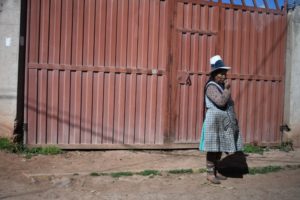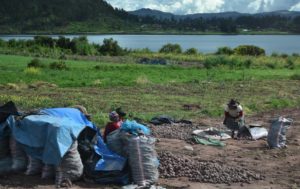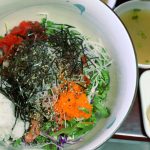Preface: My Peruvian experience was truly unparalleled; what I encountered there cannot be captured on platforms like YouTube or Google. When most people envision a trip to Peru, they visualize images of sun-drenched beaches or the enchanting peaks of the Andes. But how often do we pause to consider the richness lying beyond the usual tourist hotspots? Rarely, if ever. This article details the hidden gems and intricate tapestry of culture I encountered during my visit to rural Peru.
Upon our arrival in Peru, my family and I found ourselves residing in a hotel room adjacent to a beautiful beach. Determined to experience something authentically Peruvian, we made a unique request to our tour guide: a visit to local communities to gain insight into their way of life—a stark contrast from the modern and industrialized society we know in the United States. True to their word, the company arranged for us to visit Ollantaytambo, a close-knit Peruvian village of farmers. As we ventured farther and farther from the city, I witnessed a gradual transformation of the landscape. Towering skyscrapers gave way to modest townhouses, which eventually faded into quaint mud-brick dwellings.
After making it to Ollantaytambo, we were welcomed by three women adorned in vibrant traditional Peruvian attire. The intricacy of their clothing immediately captivated my attention. Each garment was marked with complex patterns and geometrical shapes, with some shapes and colors more prominent than others. It was as though every thread had been woven with a unique story, purpose, and meaning. Before exchanging formal greetings, the women performed a beautiful ritual, delicately plucking petals from tropical flowers and showering us with their gentle fragrance. It was a gesture with a sense of warmth and ancient tradition, offering a glimpse into the deep-rooted cultural underpinnings of their community.
The main residence consisted of a courtyard encircled by mud houses arranged in a square pattern, with a communal area at its heart. There were no conventional staircases; instead, wooden ladders served as the only way to get to the second floor of their homes, adding a rustic charm to the architecture. From this central courtyard, the distant silhouette of the Andes mountains was prominent, a constant reminder of their great reliance on agriculture. Situated a mere 400 feet away was a school providing education for the children of the community. The extremely close proximity of this school eliminated the need for public transportation, fostering a sense of tight-knit community and convenience.
Amidst the rustic charm of their village, it was intriguing to discover that these women had integrated modern technology into their lives. Mobile phones, typically associated with urban landscapes, served as vital tools for communicating with loved ones near and far. This fusion of tradition and innovation was also evident in their shared bathroom, where marble fixtures contrasted with the surrounding simplicity. Standing before us, the women introduced themselves with a sense of dignity, their words flowing effortlessly in Quechua, the ancient language of the Incan Empire. Ranging in age from their twenties to seventies, each woman bore the marks of her unique role within the community. Adorned with traditional hats featuring intricate designs reminiscent of their vibrant dresses, they took pride in their cultural heritage and the resilience of their traditions amidst the tide of modernity.
The Peruvian women showed us the tools they use for farming and the types of seeds they plant. To my surprise, they used common tools similar to those in the U.S., such as shears, hoes, and rakes. For cooking, they utilized a large iron bowl situated on their patio. This bowl was heated using a fire beneath it, a method that has been passed down through generations. Upon our arrival, they graciously heated Coca Leaves tea in the pot and served it to us in metal cups, each intricately carved with unique designs. Coca leaves are an anti-dote for altitude sickness and excessive drowsiness. The simplicity of their lives was striking and spoke volumes about the values they hold dear. Despite the modesty of their material possessions, there was a profound sense of contentment and community. While basic, the tools and techniques they used were effective and symbolized a deep connection to their land and traditions. Their way of life, rooted in sustainability and practicality, highlighted a respect for nature and a commitment to preserving their cultural heritage.
Reflection/Commentary:
There are many small communities scattered throughout Peru’s agricultural regions. As our tour van navigated the winding roads, I looked outside and noticed an abundance of farmers working on their land. The most surprising aspect was that most of the farmers were women. Countries are classified as core, semi-periphery, or periphery based on economic development. Core countries are the most developed, while periphery countries are the least developed. Peru is classified as a periphery country, which often means that many women have numerous children and work in the agricultural sector. This can be attributed to gender inequalities and a lack of educational opportunities for women, as I later learned.
Tourism is a key factor in Peru’s economy, accounting for 60% of the GDP. Industry contributes 30%, while agriculture accounts for about 10%, which is significant compared to other countries. For instance, agriculture in the U.S. comprises only 5% of the total GDP, half of Peru’s agricultural contribution. These figures highlight the substantial impact that agriculture has on Peru’s economy.
In peripheral countries, such as Peru, technology presents risks and benefits. On one hand, technology has the potential to erode small, local cultures, replacing them with more universal and popular cultures. This can undermine the traditional feel and “sense of place” that these small communities provide. For example, the infiltration of global media can overshadow local customs, languages, and traditions, leading to cultural homogenization. On the other hand, technology can significantly benefit these regions, particularly in the agricultural sector. Modern technological advancements can increase agricultural output by making farming processes easier and more efficient. Additionally, technological tools can help minimize the physical strain on farmers, improving their overall quality of life and allowing them to maintain their livelihoods sustainably.
Though rural regions of Peru may appear small and insignificant at first glance, they are the heart and soul of the nation’s cultural identity. The traditions and customs of these rural communities, deeply rooted in the practices of their Inca ancestors, play a crucial role in preserving and perpetuating the cultural fabric of Peru. The Inca civilization flourished in Peru before the Spanish conquest, leaving an indelible mark on the country’s culture. Today, the descendants of the Incas continue to inhabit these rural areas, where they maintain and celebrate ancient traditions through festivals, rituals, and daily practices. These cultural expressions link to the past and are a vital part of the contemporary Peruvian identity.
Author Info: Jay Tamirisa. Amateur historian, blogger, photographer, and travel enthusiast.
Email: jaytamirisa1234@gmail.com










Leave a Reply